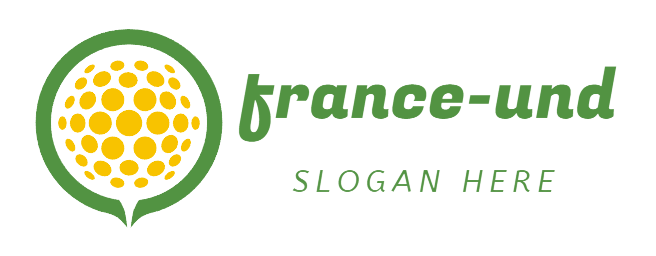As the Covid-19 pandemic continues to ravage every corner of the world, it’s increasingly important to ensure equitable access to much-needed vaccines. Progress is being made in this regard as the vaccine is now being disseminated to populations that are most in need. However, there is still much to do, particularly when it comes to ensuring vaccine equity and access for underserved communities. In this article, we’ll take a closer look at the different strategies being employed to ensure that everyone has the chance to get the vaccine necessary to protect their health.
1. Vaccination for All: Positively Impacting Underserved Communities
Vaccinating underserved communities has an immensely positive impact on population health. It’s been proven to reduce health disparities caused by poverty, low education levels, and other social determinants of health. Here are just some of the reasons why vaccination is important for underserved communities:
- It provides protection from serious infectious diseases, such as polio, measles, and influenza.
- It is one of the most cost-effective means of reducing healthcare costs.
- It contributes to a healthier workforce and improved quality of life.
- It helps prevent the spread of diseases, reducing the chances of outbreaks and epidemics.
Vaccinating underserved populations helps break the cycle of poverty and ill-health. Without the protection of vaccines, many community members cannot access their basic rights and privileges due to health problems or financial constraints. Vaccination has been a major factor in increasing life expectancy and reducing child mortality.
It’s also essential to consider the barriers many underserved communities face when it comes to accessing vaccines. Low health literacy, lack of health insurance, and insufficient transportation can all make it difficult to get the care needed. Government and health organizations have put programs in place to ensure that underserved communities have access to vaccinations. Community health workers, for example, are invaluable resources for increasing vaccine uptake among vulnerable groups.
2. Securing Vaccine Equity and Access for All
As the human race continues to battle the Covid-19 pandemic, securing equitable access to vaccines is of utmost importance. But the path towards achieving this is complex and difficult to navigate, as there is no one-size-fits-all solution.
To ensure vaccine equity, countries must have the capacity to produce the vaccines and a reliable supply chain to distribute them. With a streamlined and efficient distribution system, the vaccines can be made available quickly and to people who need them most. Moreover, there must be an adequate monitoring of the system to evaluate whether the supply is distributed to all people equally and swiftly.
To ensure accessibility for all, finance and cost should not be obstacles in obtaining the vaccines. Governments can provide subsidies or waive the cost of vaccines for those who face economic difficulties. Health workers and other frontline caregivers, who are often at risk of contracting the virus, can be given priority access to the vaccines.
Additionally, cultural barriers should be addressed with sensitivity. Health problems are sometimes perceived as a stigma in certain societies. To assist in overcoming this, healthcare campaigns should be launched that are aimed at educating the public on the safety and efficacy of the vaccine. Furthermore, local trusted leaders, such as religious figures, should be involved in helping to disseminate accurate and timely information to the members of their communities.
3. Examining Barriers to Vaccination in Underserved Communities
When it comes to ensuring complete public health and safety, the success of a vaccination program depends on the participation of each and every community. However, many underserved communities face barriers that prevent them from accessing or making use of regular vaccination protocols. Let’s take a closer look at some of the barriers to successful vaccination in underserved communities.
- Accessibility – In many underserved communities, access to essential healthcare services can be difficult due to a lack of trained personnel or necessary medical facilities. With limited public transport, many people find it difficult to get to health clinics in order to get vaccinated.
- Awareness – Without proper information and education, many members of underserved communities remain largely unaware of the importance and benefits of vaccination. Furthermore, this lack of information may also lead to misconceptions about the safety and efficacy of certain vaccines.
- Affordability – For some underserved communities, the cost of vaccines may be an additional barrier. Low-income families may struggle to pay for the required vaccinations, putting their children’s health at risk.
At the same time, some underserved communities may be at higher risk of certain infections due to poor access to healthcare and hygiene. In order to reduce this risk, it is important to identify and address the specific reasons why certain communities lack access to vaccination services, so that they can be properly protected from the threats of communicable diseases.
By recognizing and removing the barriers that prevent underserved communities from getting the vaccinations they need, we can not only help promote greater public health and safety, but also ensure that everyone has access to essential healthcare services.
4. Achieving Equitable Vaccine Distribution and Access
As the rollout of COVID-19 vaccines continues, it is essential to ensure equitable access to immunization throughout the world. Without meaningful investments in public health infrastructure, vaccines risks becoming disproportionately available to the wealthy, with the poor being left behind.
Confronting Unfairness
To combat inequality in accessibility, policy investments need to be made in those areas which are most impacted by COVID-19. Priority should be given to locales where immunization efforts are limited due to cultural, financial, or geographical reasons. Special attention should be given to vulnerable communities such as those in isolated rural areas, and those facing language or cultural barriers.
Matching Demand
The other challenge is to match the availability of vaccines with demand. Vaccines are power actors in immunization efforts but their successful application is dependent upon individuals’ access and readiness to receive them. Some communities may not trust the vaccine while others may need to be given incentives such as transportation assistance in order to actually get them. To this end, strategies should center around developing trust, as well as providing incentives or other forms of community support.
Creating an Inclusive Environment
Finally, we need to create an environment which is inclusive of diverse populations. This requires taking the time to understand the range of cultural, economic, and religious issues that may impact vaccine access. We must look beyond simply providing the vaccine, and instead focus on building an environment of trust. Regional health experts, stakeholders, and civil society organizations can be consulted to build an informed approach.
5. Reaching Vaccine Equity and Access: An Essential Step Forward
The global Covid-19 vaccination campaign has made enormous progress in vaccinating larger numbers of people. However, we have yet to truly reach vaccine equity and access. There are still global populations that are being left behind in the vaccination effort.
If we are to finally reach the goal of global vaccine access, it is essential to continue looking for innovative and equitable solutions. To that aim, here are some strategies to consider:
- Educate and create awareness among local communities about available vaccines and the importance of vaccination.
- Work to eliminate cost barriers, such as the cost of traveling to vaccination sites.
- Introduce mechanisms that incentivize healthcare professionals to serve in areas with high vaccination needs and disparities.
- Collaborate and build bridges with organizations and individuals that understand and are actively engaging local communities.
Prioritize vaccine data. Collecting reliable data about vaccine coverage is essential in order to identify populations that need additional support. If we are to truly make vaccine equity and access a reality, prioritizing data collection is a must.
Reaching vaccine equity and access can be challenging, but through collaboration, understanding, and innovation, we can make real progress in fostering a more equitable global society.
The story of vaccine equity and access is one of hope. After years of struggle, better vaccine access for underserved communities is slowly becoming a reality. As a society, we are on the brink of a new level of equality and justice. We must continue to pursue more equitable access to quality healthcare, and the vaccine must remain available to all who need it. Our future of health is in everyone’s hands.



